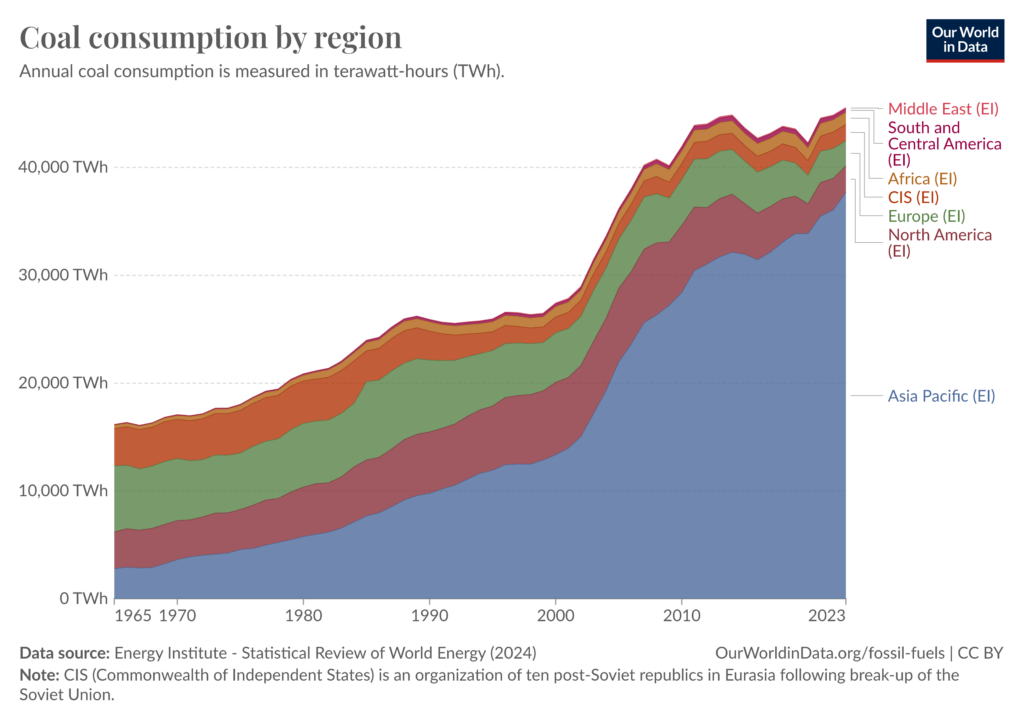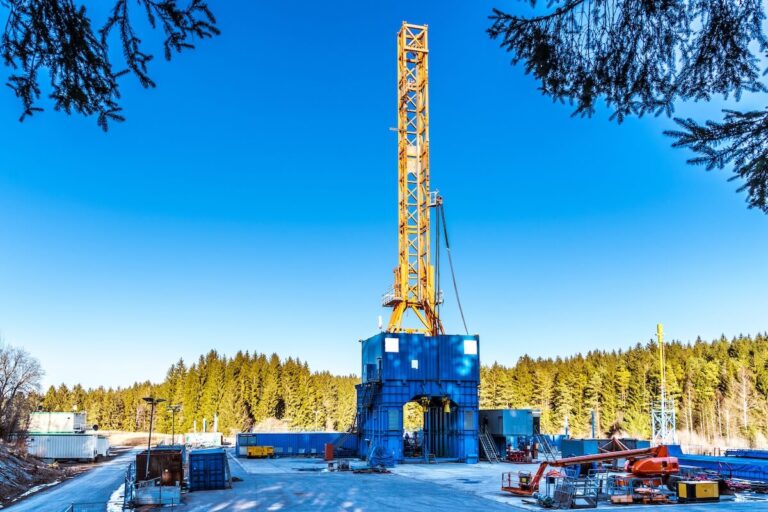Coal’s Resurgence: A Global Energy Dilemma

Balancing economic growth with environmental sustainability, particularly with coal, is a complex challenge. While coal remains a reliable and affordable energy source for many developing economies, its significant environmental impacts, including greenhouse gas emissions and pollution, make it unsustainable in the long term.
The Rising Demand for Coal in 2023

In 2023, global coal demand remained at historically high levels, driven largely by economic growth and industrial expansion in Asia, particularly in China and India.
These two nations, along with several Southeast Asian countries, now account for nearly 70% of global coal consumption.
China’s coal demand increased by around 5%, while India’s grew by over 8% due to higher power and industrial needs.
These rises have more than offset significant declines in coal use in the U.S. and the European Union, where renewable energy, lower natural gas prices, and weaker industrial output have contributed to decreased coal consumption.
Overall, global coal demand grew by about 1.4% in 2023, reaching approximately 8.54 billion tonnes.
This demand is sustained by a combination of power generation and industrial uses, particularly in emerging economies, despite pressures to transition to renewable energy sources.
The Environmental Impact of Coal’s Resurgence
The resurgence of coal consumption, particularly in Asia, poses significant environmental challenges.
Coal is one of the largest sources of carbon dioxide (CO2) emissions globally, contributing heavily to climate change.
Despite efforts to expand renewable energy, coal remains a dominant energy source in China, India, and other developing economies due to its reliability and affordability in power generation and industrial processes.
1. Increased Greenhouse Gas Emissions: Coal combustion emits large quantities of CO2, along with methane during mining operations, both potent greenhouse gases. In 2023, global coal consumption contributed to rising CO2 emissions, especially in power generation and industrial applications. This growth in emissions further complicates international efforts to meet climate goals.
2. Air Pollution: Beyond CO2 emissions, coal combustion releases pollutants such as sulfur dioxide (SO2), nitrogen oxides (NOx), and particulate matter, which contribute to air quality deterioration. These pollutants cause respiratory illnesses, acid rain, and smog, particularly in regions like China and India, where coal is extensively used for electricity and industry .
3. Deforestation and Habitat Loss: Coal mining, particularly surface mining methods like mountaintop removal, causes significant land degradation, deforestation, and habitat destruction. These activities disrupt ecosystems, affect biodiversity, and contribute to soil erosion and water pollution .
4. Water Pollution: Coal mining and combustion also lead to water contamination. Acid mine drainage from coal mines can pollute rivers and streams, harming aquatic life and reducing water quality. Additionally, the ash and waste products from coal-fired power plants can leach heavy metals like mercury, arsenic, and lead into water supplies .
5. Climate Impact: The increased reliance on coal delays the global transition to cleaner energy sources, making it harder to meet global climate targets such as those set by the Paris Agreement. The continued use of coal, despite growing renewable energy infrastructure, complicates the fight against climate change, as the world seeks to limit temperature rise to 1.5°C
Balancing Economic Growth and Environmental Sustainability
While coal remains a reliable and affordable energy source for many developing economies, its significant environmental impacts, including greenhouse gas emissions and pollution, make it unsustainable in the long term.
Strategies for balancing these priorities include:
1. Investing in Cleaner Coal Technologies
One approach is to invest in cleaner coal technologies, such as Carbon Capture and Storage (CCS). CCS involves capturing CO2 emissions from coal power plants and storing them underground, reducing the amount of carbon released into the atmosphere. This technology can enable coal use while mitigating its environmental impact, although it remains expensive and underdeveloped. Governments and industries must increase research and development (R&D) investments to make CCS more affordable.
2. Energy Efficiency Improvements
Improving the efficiency of coal-fired power plants can reduce overall coal consumption and emissions. Ultra-supercritical and supercritical coal plants operate at higher temperatures and pressures, making them more efficient and emitting less CO2 per megawatt-hour than older subcritical plants . Policies promoting the upgrade of older power plants to these more efficient technologies can help balance coal’s economic benefits with environmental concerns.
3. Gradual Transition to Renewables
While coal remains essential for economic growth in many developing countries, a gradual transition to renewable energy can help reduce long-term reliance on coal. Governments can implement subsidies for solar, wind, and hydropower, encouraging energy diversification while maintaining coal in the short term for energy security and industrial needs . This strategy has been seen in countries like India, where coal use is being supplemented by renewable investments.
4. Carbon Pricing and Regulation
Introducing carbon pricing or a carbon tax incentivizes industries to reduce emissions by making fossil fuels like coal more expensive. This approach can push companies to adopt cleaner technologies or shift toward renewables. Meanwhile, strict regulations on emissions and air pollution standards can also limit the environmental damage caused by coal while still allowing its use.
5. Diversifying Economies Dependent on Coal
Countries heavily reliant on coal for economic growth must also work towards diversifying their economies to reduce dependency. Investments in alternative industries like manufacturing, tourism, or services can help coal-dependent regions sustain economic growth even as coal production and consumption decline . This approach can be seen in regions like Appalachia in the U.S., where efforts to revitalize local economies are ongoing.
The Future of Global Energy: Coexistence of Renewables and Fossil Fuels
The coexistence of renewables and fossil fuels will define the global energy future for several decades. While renewables will take an increasing share of the energy mix due to their environmental benefits, fossil fuels will continue to play a crucial role in meeting energy demands, particularly in developing economies. The challenge will be to accelerate the transition to a cleaner energy future through innovations in technology, policy frameworks, and international cooperation




